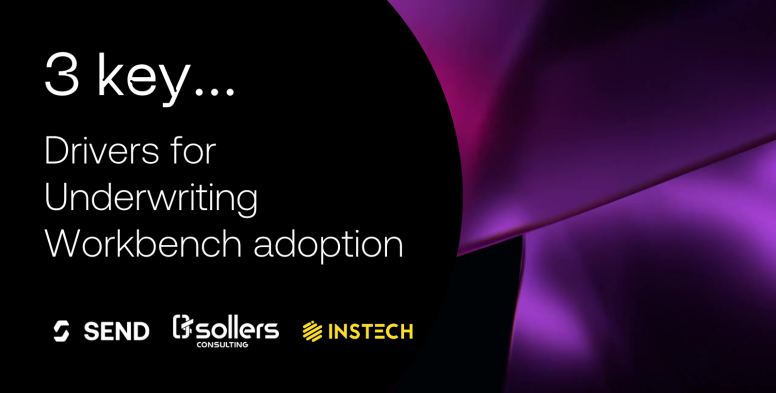
There’s a common perception that commercial and specialty underwriting is a slow and outdated process. That the science hasn’t kept with the art. However, we have seen a rise in the use of technology within the underwriting function, most notably the Underwriting Workbench, to try and modernise and increase efficiencies.
Previously, clunky legacy systems and a lack of specialised insurance technologies have done little to improve the manual underwriting processes.
A survey conducted by Accenture in 2021 uncovered that only 46% of underwriters found that their current tech stack had a positive impact on reducing their time spent on non-core tasks.
So how is an underwriting workbench any different? In short, underwriting workbenches provide insurance-focused tools to automate and streamline admin-heavy tasks, speeding up the underwriting process and crucially, giving underwriters back time and insights to focus on the best risks.
An underwriting workbench creates an opportunity for underwriting teams to increase their efficiency and competitive edge. It’s a powerful tool that helps them drive better results for their business, and their customers.
We partnered with InsTech and Sollers Consulting, to create A Beginner’s Guide to Underwriting Workbench, which identifies the following as key drivers for underwriting workbench adoption:
1. The war for talent
It is well known that the insurance industry is experiencing a talent drought. The challenge is for insurers to attract newer and more diverse talent to fill the gap that will be left by retirees and people who have switched jobs.
In 2020, the London Market Group estimated that 50% of the London market would be set to retire within the next 10 years. Additionally, during lockdown when people had time to reflect, many decided to change their career, start their own businesses, or pursue their passions. So, staff turnover became an even greater issue.
To engage newer generations, insurers would benefit from providing them with efficient technology.
The younger generation grew up in a digital world, so they are more accustomed to user-friendly interfaces, and expect employers to provide technology that is adaptable, easy to use, and increases the efficiency of daily tasks.
With a modern underwriting workbench in place, underwriters can focus on more strategic activities, upskilling themselves whilst supporting strategic developments in the business. This drives talent retention as their value to the business becomes even more visible.
2. The emergence of digital MGAs
Digital MGAs have increased in number, making the market more competitive. These MGAs have developed operating models that make good use of new modular technologies and data to speed up underwriting.
According to Accenture, 80% of insurers believe they need to innovate faster than ever to keep a competitive advantage.
An underwriting workbench can attach to existing systems to help traditional insurers keep up with these digital MGAs who are developing modern technology solutions and products that can be rapidly adapted to meet changing customer needs.
3. Increased pressure to personalise, whilst producing competitive premiums
Due to the digital MGA market becoming more and more competitive, these MGAs and other businesses are offering tailored insurance products. This means insurers must also face up to the need to provide personalised products to keep up with this trend.
However, MGAs can be competitive because they have the technology and risk data to hand to be able to generate tailored quotes and more personalised products. Older, more established insurers simply don’t have the tech to enable this. An underwriting workbench can help them to compete with smaller, more nimble businesses.
It is crucial that underwriters are provided with data in almost, or actual real-time. Insurers must take advantage of data ingestion and extraction tools to inform risk selection and AI analytics to build personalised products in order to access, merge or generate necessary insights.
An underwriting workbench can simplify complex workflows and create straight-through processing for more simple requests. This enables underwriters to intervene only for more challenging cases, which improves underwriting efficiencies and performance.
Underwriters also require data in almost or actual real-time. To access, merge or generate the necessary insights insurers must take advantage of data ingestion and extraction tools to inform risk selection and AI analytics to build personalised, relevant products. Where an underwriting workbench provides a pricing engine, underwriters can get up to speed on the analysis needed to price ultra-personalised policies.
What’s driving you?
The three drivers above have been influenced by a need to drive business growth and increase overall performance. As a result, insurers need to free up underwriters to work on higher value and more strategic tasks like improving their underwriting quality, winning new business and retaining and effectively managing portfolios.
What’s the key driver for adopting underwriting technology in your business? If you’d like to learn more about implementing an underwriting workbench, book a demo here.